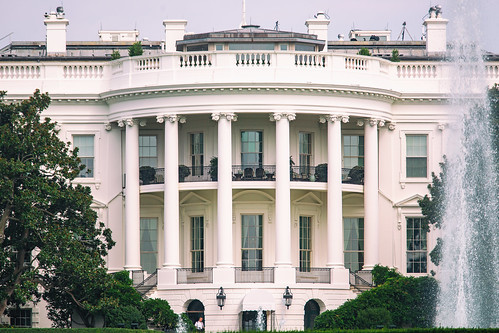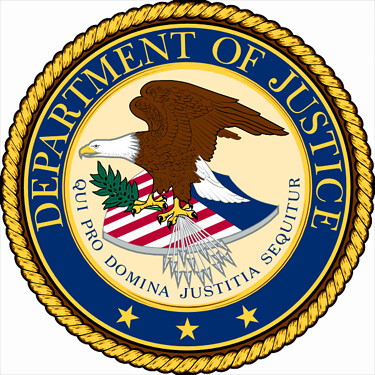The federal Council on Environmental Quality (CEQ) has proposed to revise its regulations administering the National Environmental Policy Act (NEPA) of 1969. NEPA requires federal agencies to assess the environmental effects of their proposed actions, and incorporate this information into their decisions. Government-wide guidance is provided by the White House’s CEQ, established by NEPA and appointed by the President. CEQ issues formal regulations that agencies must follow, and guidance documents that provide additional advice. CEQ also reviews agencies’ NEPA implementation programs, and publishes annual national Environmental Quality Reports.
Read MoreAudit, Compliance and Risk Blog
Trump Administration Proposes to “Modernize” Federal Environmental Impact Assessments by Narrowing Them
Posted by Jon Elliott on Tue, Feb 25, 2020
Tags: Business & Legal, Environmental risks, Environmental, EHS, EPA, clean water, site auditing, greenhouse
On February 10, the Trump Administration issued its budget proposal for federal Fiscal Year (FY) 2021 (October 1, 2020 through September 30, 2021), entitled “A Budget for America’s Future.” The drastic changes in budgeting for environmental health and safety (EH&S) regulation are consistent with previous proposals from this administration. They have no chance of adoption, particularly given the Democrats’ control of the House of Representatives, but still represent a fair summary of the President’s continuing priorities.
Read MoreTags: Business & Legal, Environmental risks, Environmental, EPA
New EPA Policy Redefines “Ambient” Air on Stationary Source Sites
Posted by Jon Elliott on Tue, Jan 28, 2020
Although a major focus of the Clean Air Act (CAA) is the definition, attainment and maintenance of national ambient air quality standards (NAAQSs), the statute doesn’t define the term “ambient air.” This gap leaves the Environmental Protection Agency (EPA) to develop regulatory and policy definitions that delimit the reach of CAA authority. Since 1971, EPA’s definition defines “ambient air” as “that portion of the atmosphere, external to buildings, to which the general public has access.” EPA also provides additional details in a series of policy documents, which have just been updated with a memorandum from EPA Administrator Wheeler to expand the exclusions for onsite air.
Read MoreTags: Business & Legal, Environmental risks, Environmental, EPA, CAA
EPA Completes Re-Revisions to Accidental Release Prevention Rules
Posted by Jon Elliott on Mon, Dec 23, 2019
On November 20, 2019, the Environmental Protection Agency (EPA) completed its latest review and revisions to the Accidental Release Prevention (ARP) program for toxic catastrophe prevention under the Clean Air Act (CAA). These changes complete the Trump Administration’s review and repeal of most changes enacted during the Obama Administration, returning ARP requirements to roughly the point they were at before 2016. The remainder of this note summarizes these changes.
Read MoreTags: Business & Legal, Environmental risks, Environmental, EPA, Hazcom, CAA
The Resource Conservation and Recovery Act (RCRA) assigns the US Environmental Protection Agency (EPA) to define and then regulate “hazardous wastes.” RCRA provides EPA considerable discretion, and one way the agency applies that discretion is by separating hazardous wastes into categories that are subject to distinct waste management requirements. One basis for these categorizations is relative risk – since 1995, EPA has defined a limited set of lower-risk wastes as “universal wastes” subject to special rules intended to encourage recycling (40 CFR part 273).
Read MoreTags: Environmental risks, Environmental, EPA, Hazcom, RCRA
For nearly 30 years, environmental regulation has included examples of market-like mechanisms, where overall pollution limits (“budgets”) are set and individual sources assigned trade-able “emission credits” that can be traded among sources as they negotiate the most efficient pathways to overall reduction necessary to meet the budget. Although proliferating “cap and trade” systems for greenhouse gases are probably the most widely known, other examples abound.
Read MoreTags: Environmental risks, Environmental, EPA, clean water
EPA Proposes to Revise Rule Governing Lead in Drinking Water
Posted by Jon Elliott on Tue, Dec 10, 2019
Since 1991, Safe Drinking Water Act’s (SDWA) Lead and Copper Rule (LCR) has required public water systems (PWSs) to take steps to protect their customers from hazardous levels of lead in drinking water. Even before the highly-publicized crisis in Flint, Michigan, the Environmental Protection Agency (EPA) was working to update and expand LCR’s protective measures. These efforts include a 2016 White Paper announcing the “urgent need” for revisions, describing key issues and possible revisions, and projecting a proposal to issue extensive LCR revisions during 2017. However, after President Trump assumed office, EPA’s priorities shifted and the agency delayed action (I summarized the existing LCR and wrote about EPA’s regulatory delay here). In November 2019, EPA proposed LCR changes, which I summarize below.
Read MoreTags: Environmental risks, Environmental, EPA, clean water
In May 2017, the Environmental Protection Agency (EPA) convened a task force of career professionals to evaluate the agency’s Superfund cleanup policies and make recommendations for improvements. The Task Force issued recommendations in December 2017 (I wrote about them here), and has now issued its final report. The report includes multiple examples of accomplishments related to each of the Task Force’s five goals.
Read MoreTags: Environmental risks, Environmental, EPA, site auditing
Feds Issue Nationwide Motor Vehicle Greenhouse Gas Standards and Declare California’s Standards to be Preempted
Posted by Jon Elliott on Tue, Oct 22, 2019
The federal government has taken another step in its car wars with California. Late in September the Environmental Protection Agency (EPA) and the National Highway Traffic Safety Administration (NHTSA) issued joint rules declaring NHTSA’s preemptive authority to set national standards covering greenhouse gas (GHG) emissions from petroleum-fueled vehicles and electric vehicles, and revoking a waiver from EPA that lets California set such standards.
Read MoreTags: California Legislation, Environmental risks, Environmental, EPA, ghg, Transportation, greenhouse
Department of Justice Reemphasizes its Disfavor for Supplemental Environmental Project Agreements with State and Local Governments
Posted by Jon Elliott on Tue, Oct 15, 2019
Since President Trump took office, the US Department of Justice (DOJ) has taken repeated steps to restrict federal attorneys from negotiating settlements in which defendants agree to conduct “supplemental environmental projects (SEPs)” in exchange for reduced formal penalties for the noncompliance that led to the agency investigation and enforcement. Proponents see SEPs as a way to promote environmental and health values by encouraging defendants to undertake projects that wouldn’t occur otherwise in order to reduce or eliminate civil and/or criminal liability. Opponents see them as rogue efforts in which prosecutors substitute their own judgment for the statutory and regulatory directives that are supposed to guide their actions.
Read MoreTags: Business & Legal, Environmental risks, Environmental, EHS, EPA, clean water










